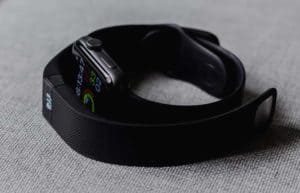Memory foam pillows can grow mold – but there’s no need to panic!
The truth is that memory foam pillows are vulnerable to mold growth due to their construction; they’re made with dense materials that trap moisture and heat, creating a perfect environment for mold spores to thrive.
Fortunately, there are some simple steps that you can take to prevent your pillow from becoming an unexpected home for unwanted guests.
Read on for more information about how to keep your memory foam pillows free of pesky spores!
What Is Mold?

Mold is like a dark, mysterious traveler. It moves through homes, unseen and unheard. It can lurk in tight corners and hidden crevices, slowly but surely creeping up and creating an unwelcome presence.
Mold is a type of fungus that grows in damp, humid environments. It’s made up of microscopic organisms that feed on decaying organic matter, such as wood or paper.
When mold spores enter the air they can cause allergic reactions and asthma attacks in some people.
Mold often has a musty odor, which becomes more intense when it’s left untreated.
If left unchecked, mold can spread quickly to other areas of your home.
Memory foam pillows are particularly prone to becoming infested with mold due to their porous nature and warm environment – the perfect breeding ground for this unwelcome visitor!
What Causes Memory Foam Pillows To Grow Mold?
Mold growth on memory foam pillows can be caused by moisture, humidity, and lack of air circulation.
It’s important to keep an eye out for any signs that mold is forming on the pillow.
Signs can include discoloration, a musty odor, or visible spots.
Regular cleaning of your pillow is key in avoiding mold growth. Memory foam pillows can be machine-washed on a gentle cycle with warm water, but it’s best to check the care instructions first as some types may require spot cleaning only.
After washing, allow your pillow to air dry completely before using it again.
It’s also important to keep your bedroom well ventilated and maintain a temperature that won’t cause condensation on the walls or windows.
This will help reduce the chance of mold growing on your memory foam pillows.
Can Memory Foam Pillows Be Cleaned To Remove Mold?
Irony aside, it seems we can’t escape the presence of mold – not even with memory foam pillows.
But just as mold is unavoidable, so too is the question: Can memory foam pillows be cleaned to remove mold? The answer isn’t quite so straightforward.
It’s true that removing mold from a memory foam pillow is possible, but it’s also incredibly difficult and time-consuming.
Your best bet is to use a mixture of detergent and water to scrub away any visible signs of mold. If the problem persists, you may need to call in professional help.
That said, cleaning a memory foam pillow isn’t enough to prevent future mold growth.
Instead, it’s about taking proactive measures like regularly airing out your pillow and using covers designed specifically for this purpose.
That way, you can ensure your beloved pillow stays safe and sound – no matter how much mold might be lurking nearby!
How To Protect Memory Foam Pillows From Mold

Mold is a common worry when it comes to memory foam pillows, with 72% of people believing that mold can grow on them.
Knowing how to protect your pillow from mold is essential for keeping it clean and comfortable. Here are some tips for guarding against mold on memory foam pillows:
- Clean regularly: Vacuum the pillow and surface around it every few weeks to remove dust and dirt particles which attract mold spores. Wash the pillowcase in hot water every week.
- Create a breathable environment: Make sure your bedroom is well ventilated and keep doors open when possible to allow fresh air in.
- Use a dehumidifier: Running a dehumidifier in the room helps reduce humidity levels, making it less likely for moisture to form and cause mold growth.
A few simple steps can help protect a memory foam pillow from getting damaged by mold, ensuring it remains clean and comfortable for many years to come.
To maintain your pillow over time, regular cleaning, ventilation, and use of a dehumidifier are key.
Tips For Maintaining Memory Foam Pillows

Memory foam pillows provide great comfort and support for a good night’s rest. But, if not properly maintained, they can grow mold and mildew.
Thankfully, there are steps you can take to keep your memory foam pillows clean and free of mold.
Let’s discuss tips for maintaining memory foam pillows.
First, always air out your pillow before use. Airing out the pillow helps prevent moisture build-up which can cause mold growth.
Before putting it away, allow the pillow time to air dry in the sun or near an open window or door.
This will help reduce any bacteria or moisture that may have built up during use.
Second, wash your memory foam pillow regularly using gentle detergent and warm water.
Don’t forget to rinse thoroughly after washing to get rid of any soap residue that could clog the pillow’s pores and cause mold growth.
After rinsing, make sure that the pillow is completely dry before storing it away again.
You may also want to consider investing in a waterproof cover for extra protection against moisture buildup when not in use.
Finally, don’t forget to store your memory foam pillow in a cool, dry place when not in use – this will help reduce the chances of mold growth considerably over time.
So following these simple steps can help keep your memory foam pillows clean and free of mold so you can enjoy them for years to come!
What Are The Health Risks Of Mold In Memory Foam Pillows?
Mold growth in memory foam pillows can be a serious health hazard. This type of mold produces toxins, which may cause respiratory issues if inhaled.
Additionally, the moisture that is necessary for mold to grow may lead to skin irritation and other allergic reactions.
It’s important to be aware of the potential risks associated with mold in memory foam pillows. If any signs or symptoms are present, it’s best to take action immediately.
For instance, if there is a musty smell coming from the pillow, this could indicate a sign of mold growth.
This type of situation should not be taken lightly; if mold is suspected, it’s important to take steps to remove and replace the pillow as soon as possible.
Moving forward, avoid this issue by being aware of the signs and using preventative measures such as airing out pillows regularly and using a dehumidifier in damp areas.
What To Do If You Suspect Mold Growth
Mold growth in memory foam pillows is an absolute nightmare! It’s every homeowner’s worst fear – to wake up and find their pillow full of disgusting, slimy mold.
It doesn’t just look bad – it can be hazardous to your health too. So what should you do if you suspect mold growth in a memory foam pillow?
First off, don’t panic. In most cases, the mold won’t be that pervasive or dangerous. But still, it’s best to take precautions to prevent the mold from spreading further.
Start by washing the pillow with an antibacterial soap and warm water.
This will help remove any bacteria or spores that may have accumulated on the surface of the pillow. If that doesn’t work, then you may need to replace the pillow altogether.
Finally, remember to keep your bedroom well-ventilated and dry as this will help reduce the chances of future mold growth in your memory foam pillows.
Also, make sure to regularly vacuum and wipe down surfaces in your bedroom so that any dust and dirt particles don’t accumulate and become a breeding ground for bacteria and other harmful organisms.
Taking these steps will help ensure that your pillows remain safe and free from harmful mold for years to come!
Frequently Asked Questions
What Is The Best Way To Clean Memory Foam Pillows?
When it comes to memory foam pillows, keeping them clean is essential for avoiding mold. Cleaning these pillows isn’t difficult, but there are a few tips and tricks that can make it much easier. With the right know-how, you can keep your memory foam pillows fresh and free of mold.
One way to prevent mold from growing in your memory foam pillows is to regularly air out the pillow by exposing it to sunlight and fresh air. To do this, take the pillow off of your bed and place it outside on a dry day. This will help remove any moisture or debris that has accumulated inside the pillow’s core over time.
The best way to clean memory foam pillows is by spot cleaning them with a mild detergent and warm water. Start by sprinkling some detergent on the stained area and gently rubbing it in with a soft cloth or sponge.
Next, use a damp cloth to rinse away the detergent, then let the pillow air dry before putting it back on your bed. For deeper stains, you may need to repeat this process several times before they disappear completely.
Cleaning your memory foam pillows regularly will go a long way towards keeping them fresh and free of mold – no matter what kind of stains or debris they’re exposed to! So grab some detergent, get ready for some spot cleaning action, and enjoy having safe and comfortable sleep every night.
Can Memory Foam Pillows Be Washed In A Washing Machine?
Memory foam pillows have become incredibly popular in recent years, with an estimated 63% of households owning one or more. But can these pillows be washed in a washing machine?
Surprisingly, the answer is yes.
It’s important to bear in mind that some manufacturers may advise against it, as the pillow might not fit into an average-sized machine and could get damaged in the process.
However, if your pillow is small enough to fit and you want to use a washing machine, go ahead. Use warm water and a mild detergent for best results; harsher chemicals may damage the material of the pillow.
It’s also essential to dry the pillow thoroughly afterwards, either by leaving it out in the sun or using a tumble dryer on low heat.
Washing memory foam pillows isn’t always necessary – spot cleaning with a damp cloth should do the trick for most cases – but it is an option if you need it.
Just make sure you take all necessary precautions when doing so, such as checking manufacturer instructions and drying fully after washing.
Do Memory Foam Pillows Need To Be Replaced After A Certain Amount Of Time?
Memory foam pillows are a popular choice among sleepers. They provide superior comfort and support, while also conforming to the user’s body shape.
But how long do they last? There is no definitive answer as quality of materials, level of use and care, and other factors all play a role in determining the lifespan of these pillows.
Take my friend for example. She was one of those people who bought the cheapest memory foam pillow she could find.
Well, two short years later it was like sleeping on a rock! Not only had it lost its shape but it was also full of dust mites. It was time to replace it with a new one!
On the other hand, if you buy quality memory foam with good density and firmness ratings, then your pillow should last much longer than two years – up to five or six years depending on usage and care.
Regularly fluffing or shaking your pillow helps maintain its shape and loft, while also preventing dead skin cells from accumulating in the fibers.
A good quality pillow protector can help protect against dirt and dust mites which can cause mold growth over time.
TIP: Memory foam pillows require some extra care to ensure they last their maximum lifespan. Make sure you invest in good quality materials that come with reviews from verified customers, and don’t forget to use a protective cover and fluff or shake regularly!
What Are The Signs Of Mold Growing In Memory Foam Pillows?
Mold growth in memory foam pillows is a common problem that many people face. It can be difficult to detect, so it’s important to know the signs of mold and how to avoid it. Here’s what you need to know:
Signs of Mold:
Visual:
1. Discoloration on the surface of the pillow
2. Stains or spots
Olfactory:
1. Musty or stale smell
2. Prevention Tips Keep the pillow dry by avoiding moisture and humidity.
3. Air out the pillow regularly by propping it up outside for a few hours each day.
4. Clean your pillow with a vacuum cleaner every few weeks.
When dealing with memory foam pillows, prevention is key.
These tips will help you reduce your risk of mold growth, but if you do find signs of mold, replace the pillow immediately.
It’s also important to note that certain conditions make it more likely for mold to grow, such as warm temperatures and high humidity levels.
Therefore, make sure to keep an eye on environmental factors that could affect your pillows’ health.
Conclusion
It’s important to take care of your memory foam pillows to avoid mold growth. Regular cleaning and proper storage will help you extend the life of the pillow and prevent any health risks that come with mold.
I can tell you from experience, having a moldy pillow is no fun.
The smell alone is enough to make anyone queasy. Not only that, but a moldy pillow could be detrimental to your health as well.
Take the necessary steps to keep your memory foam pillows clean and free of any unwanted guests!
The best way to ensure that your memory foam pillows stay free of mold is by cleaning them regularly with mild detergent and warm water.
You can also use a vacuum cleaner or brush attachment on low suction to remove dust particles and other debris.
Taking these precautions will help you enjoy a comfortable night’s sleep without worrying about inhaling dangerous spores or dealing with an unpleasant odor in the morning.





